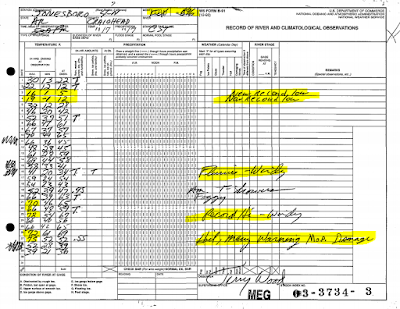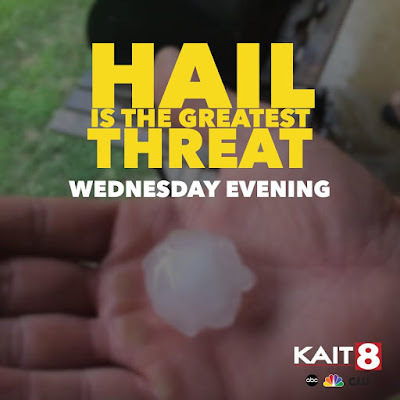I was almost scared to make a prediction in 2020 regarding the winter! We are all preparing for the worst in our minds, but let's take a deep breath and look at some data! First off, this is just an outlook. While I've had many successful winter forecasts, I've also had a couple of BUSTS. Thankfully, I still have a winning record. Regardless, I always like to remind everyone that I do these outlooks for fun and I don't expect anyone to make critical decisions based on this outlook.
As you may have heard, we are transitioning from a weak El Nino pattern to a La Nina pattern. This pattern is determined by the sea surface temperatures in the equatorial Pacific Ocean region. As with all of my outlooks, I like to look at global patterns and compare them to the past. While we can't look at the past and get definitive answers, we can get an idea of what we saw in Region 8 when we had similar setups.
After looking over the data, I decided to look at TWO winter seasons to derive an outlook for Region 8 for the 2020-2021 winter season: The winter of 1955-1956 and the winter of 1995-1996. The 1955-1956 climate logs were kept by the Benedictine Sisters of the Holy Angels Convent. For those that don't know, the Holy Angels Convent is located on KAIT road and is only a mile from the TV station. The 1995-1996 climate logs were kept by my predecessor, Terry Wood at KAIT.
First, here are the climate logs from December 1955-February 1956:
As you can see in the above image, December of 1955 had some big swings in temperatures and some flurries. A couple of mornings started in the TEENS, while some days had highs in the 60s and 70s! Big swings like that indicate an amplified pattern. I'm a little surprised we did not have more severe weather.
The above log shows January of 1956. Snow lovers will love this month. We had TWO decent snowfalls. The first was a 5" snowfall on the 18-19th. Not all of the snow had melted when another 1.5" fell on the 23rd-24th. Some sleet was mixed in, as noted in the comments. Once again, we see HUGE swings in temperatures. Notice how it was 17° on the 24th, but 67° a few days later on the 28th! Wow.
The above image is the log from February of 1956. This was not a good month for snow lovers. While a few flakes flew on February 10th, the comments show that it melted quickly. Temperatures moderated a lot this month. No teens. Not many 20s. And many days were in the 50s, 60s, and 70s! This is something worth noting! Also, we had severe weather, including tornados. Here are the tornadoes that occurred in February of 1956:
So, now let's take a look at the Winter of 1995-1996:
The above image is the climate log from December of 1995 from Terry Wood. The first thing that jumps out at me is the big swings in temperatures again! We had a couple of mornings in the TEENS, including 14° on the 16th. Yet, on Christmas Eve, it was 74°! That's wild!
Let's look at January of 1996:
January of 1996 was WILD. At face value, there was only 2" of snow or less. BUT, let's dig deeper. Take a look at January 18th. The high was 64° and the low was 16°! The next morning is was 8°! In the comments, Terry notes that the wind chill was -30°!, but it's worth noting that the formula to calculate the wind chill changed in 2001. Still... IT WAS COLD!
Those big swings in temperatures also led to some severe weather. There were some tornadoes in January of 1996:
Let's look at February 1996:
More BIG SWINGS in temperatures for February of 1996. On the morning of the 3rd and 4th, we broke record lows with 1° and -1°, respectively. In less than a week, we were back into the 60s and 70s! By the end of the month, we were breaking high temperature records with severe weather. ON the 23rd, we almost hit 80°... IN FEBRUARY.
The Spring of 1996 that followed this winter was a busy one! Here are the tornadoes from March of 1996, which includes the long-track F3 tornado that went through Izard, Sharp, and Lawrence counties:
April of 1996 was also active. We had a few more tornadoes, including a long-track F4 tornado that went through Stone and Izard counties. This tornado killed 7 people:
So, after looking over our current pattern and looking at what this pattern has done in the past, I've come up with 8 thoughts about the 2020-2021 Winter Season:
- The Winter starts early. Very cold air comes in for December
- Big swings in temperatures! Some mornings in the teens or single digits. Days later, much milder.
- We will challenge record lows and record highs.
- We will see 2-3 severe weather events with tornadoes possible.
- We will see 2-3 winter weather events.
- Wintry weather will likely include some sleet and freezing rain (glaze). Nothing like 2009 though.
- We will have some very windy days!
- We will see winter end early with a warm February, leading to an above average severe storm season in the Spring.
So there it is! Stay tuned!
Ryan



























